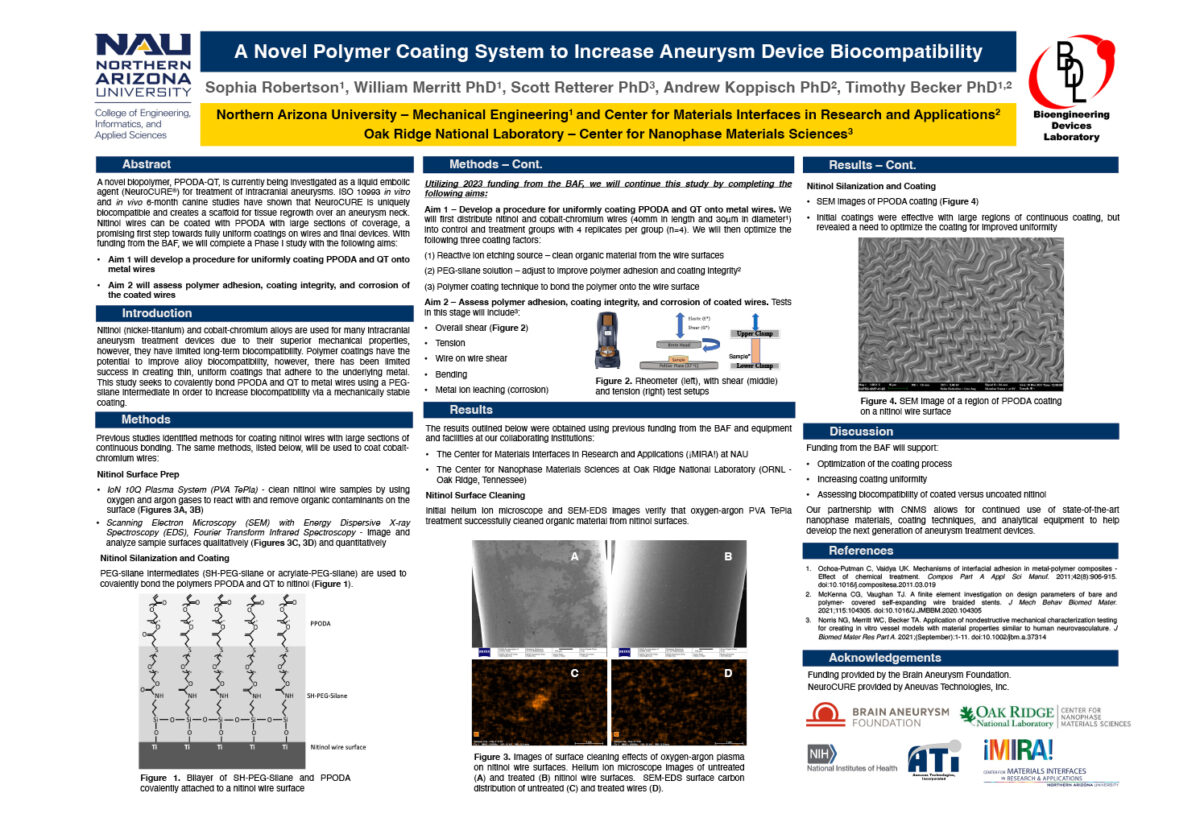Meet Research Grant Recipient: Sophia Robertson

Sophia Robertson is the recipient of the NYC Marathon and Sharon Epperson Chair of Research for $40,000.
BAF: Please tell us your background, where you are from, schooling, etc.
SR: I grew up in southern California and moved to Phoenix, Arizona for high school. I came to Flagstaff, Arizona for my undergraduate studies at Northern Arizona University (NAU), and received BS degrees in Biomedical Science and Chemistry, and a BA in Spanish. I stayed at NAU and am currently working towards a PhD in Bioengineering.
BAF: What led you to become involved with brain aneurysm research?
SR: During the pandemic, I started working as a medical scribe and EMT. Through those clinical experiences, I recognized a need for improved medical devices and discovered my passion for developing neurointerventional technology. Shortly after, I became a research associate in Dr. Timothy Becker’s Bioengineering Devices Laboratory (BDL) at Northern Arizona University, which analyzes, characterizes, models, and develops new medical devices for brain aneurysms and stroke treatment.
BAF: In the simplest terms, what is the purpose of your project?
SR: Coatings on metal aneurysm treatment devices improve the way that these devices interact with the human body by improving aneurysm healing and reducing the need for permanent blood thinners. However, there has been limited success in creating a thin, uniform polymer coating that adheres well to a highly flexible aneurysm treatment device. The purpose of my project is to use novel methods and a polymer material with proven superior biocompatibility (PPODA-QT) to coat nitinol and cobalt-chromium wires, which are commonly used to construct aneurysm treatment devices such as stents.
BAF: In the simplest terms, what do you hope will change through your research findings?
SR: Through this research, I hope to minimize the long-term risks of aneurysm treatment devices such as stents and endovascular flow diverters. Improving aneurysm healing time and reducing the need for permanent blood thinners will reduce the need for aneurysm retreatment (due to recanalization) and the severe bleeding risks associated with permanent blood thinners.
BAF: Why is the funding you are receiving through the Brain Aneurysm Foundation so important?
SR: The Phase I data obtained using this funding from the Brain Aneurysm Foundation will be submitted for Phase II NIH funding, which will support coated endovascular flow diverter prototype development and testing. Future Phase II testing will include prototype manufacture, mechanical comparison of the prototype to commercially-available coated flow diverters (i.ePipeline Shield), and in vivo animal implant studies, to prepare for an eventual FDA submission.

Pictured above is Sophia’s research poster, “Development of a Novel Biocompatible Polymer Coating for Aneurysm Treatment Devices“


 Brain Aneurysm Foundation
Brain Aneurysm Foundation